Keeping up with the constantly shifting goalposts in the healthcare industry over the past year has required communications firms working in the sector to stay abreast of seemingly constant social and technological change.
Those social changes are primarily a result of the growing role patients are now playing in how healthcare is delivered.
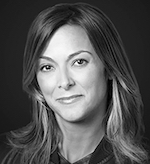 Jennifer Paganelli |
“Empowered patients are no longer outliers—they’re here to stay,” said W2O Practice Leader, Earned and Social Media Jennifer Paganelli. “Patients bring a unique, authentic ability to connect and inspire that a traditional press release will never rival.”
Paganelli noted that healthcare firms are bringing patient groups into the process at a much earlier point than they once did, making patient points of view a central part of their communications efforts. She said this trend will grow in the years to come, eventually becoming standard practice for healthcare communications practitioners.
Michael Roth, who leads of Bliss Integrated Communication’s healthcare practice, added that “patients are transforming business and getting what they want, and healthcare businesses are getting smarter about delivering what patients need.”
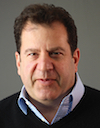 Michael Roth |
Roth cited the rare disease space as a prime example of how patient activism is having a big effect. “Many rare diseases have small but mighty advocates who testify at FDA hearings to ensure regulators consider not just the scientific innovation of a new treatment option but the full patient experience too,” he said.
Roth also pointed to another factor in the equation: the emergence of the “empathetic client,” or healthcare practitioners who are beginning to listen to what patients have to say.
Spectrum President Michelle Gross said this trend is part of a move away from “seeing healthcare providers as the sole decision maker when it comes to treatment and prescription decisions.”
|
|
The increasing importance of patient concerns has opened up new avenues for healthcare communicators in a few ways. “We’re seeing direct-to-consumer marketing in categories and topics we never would have imagined 10 years ago,” Gross said. Among those categories: advertising for cancer treatments, which she said have become mainstream over the past few years. “There’s even discussion about including drug prices in DTC ads,” she said.
In addition, these conversations are leading communicators toward channels that consumer audiences use—most importantly social media. “Convincing healthcare executives to responsibly engage on social media channels” is a challenge for many communication pros, according to W2O’s Paganelli. “Companies that stand out are utilizing these channels to their advantage.”
The expanding audience of consumers for healthcare communications efforts is also resulting in a bigger pool of “non-traditional players,” such as vision insurance companies that also focus on clinical outcomes, who Roth said are “crossing over and demonstrating real value in the space.” With the emergence of those players, Roth said, “the health and life sciences ecosystem is being turned on its head and it takes subject matter expertise in insurance, technology, therapeutics and even financial services to help these clients succeed.”
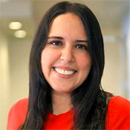 Michelle Gross |
It’s not only the entry of patients and non-traditional providers in the healthcare communications environment that’s a factor. The efforts toward diversity and inclusion that have characterized the communications industry as a whole are also on the radar for healthcare communications companies.
“Positive changes in diversity and inclusion efforts at major companies are moving the needle for the better,” said Paganelli. “These efforts were happening behind the scenes in many instances, but now are front and center.”
When it comes to technological change, artificial intelligence, telemedicine and electronic health records are all drivers of a changing relationship between healthcare communications providers and audiences, according to Roth.
He noted that each generation of healthcare consumers requires its own set of communications priorities. “While a Millennial may go to extensive lengths to avoid an in-person doctor’s visit in favor of a virtual check-in,” he said that Boomers may be more hesitant about putting their trust in technology and senior citizens may see the human-to-human contact of a doctor’s visit as a way to stave off loneliness.
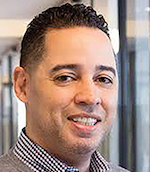 Rob Oquendo |
Spectrum Chief Innovation Officer Rob Oquendo also pointed out the role technology is playing the tailoring of messages to a range of audiences. “Technology is enabling a paradigm shift from sharing content to establishing one-on-one conversations,” he said. “Healthcare communicators need to start thinking about how to leverage messaging platforms to reach audiences, whether it’s text, voice or bots leveraging AI.”
Paganelli said that “technology is democratizing access to data.” Using machine learning and AI to “make sense of the massive amounts of public social data,” Paganelli believes communicators can uncover consumer concerns and nuances of opinion to produce more targeted, insightful communications.
In addition, possible regulatory and legislative developments could provide a boost.
“If certain proposals to update HIPAA and current innovation-first programs at the FDA remain, I see greater opportunity in healthcare for companies—and their investors—that can address priority and unmet patient needs through these pathways,” said Roth.
“With the 2018 FDA guidance on patient-focused drug development,” said Spectrum’s Gross, “we’ll see clinical trials—and what is said about the drugs resulting from them—become more reflective of the patient experience and more attuned with what the patient is looking for.”
However, in a sector marked by mergers and focused on new technologies, audiences and suppliers, communications basics—and a firm knowledge of what your firm can and can’t do—is still seen as fundamental to success in the sector.
“Massive integration means that everyone does everything,” said Roth. “Clients may be confused by agency offerings and assume you have experience in areas where you simply don’t have experience.”
W2O’s Paganelli emphasizes that practitioners still need “well-rounded, 360-degree understanding of the paid, earned and shared tools in our arsenal and how to deploy them appropriately to reach our key audience where they are going for information in the format they want to receive it in.”

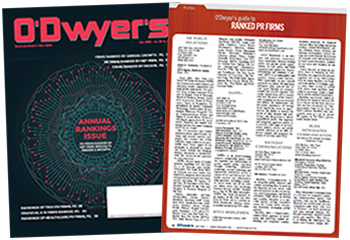

 Lo Isidro, senior director at Real Chemistry with more than a decade of strategic communications and PA experience, has joined Narrative Strategies.
Lo Isidro, senior director at Real Chemistry with more than a decade of strategic communications and PA experience, has joined Narrative Strategies. Nelson Fernandez, former North American chair of APCO Worldwide and managing director of Burson-Marsteller, has joined Volunteers in Medicine Berkshires as director of communications and PA.
Nelson Fernandez, former North American chair of APCO Worldwide and managing director of Burson-Marsteller, has joined Volunteers in Medicine Berkshires as director of communications and PA. Lilit Bargar, who was most recently an EVP in the healthcare practice at Weber Shandwick, comes on board at GCI Health as EVP, corporate practice lead.
Lilit Bargar, who was most recently an EVP in the healthcare practice at Weber Shandwick, comes on board at GCI Health as EVP, corporate practice lead.
 Five ways that successful thought leaders are made.
Five ways that successful thought leaders are made.


 Have a comment? Send it to
Have a comment? Send it to 
No comments have been submitted for this story yet.